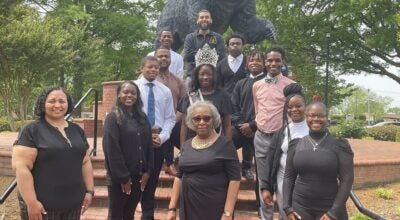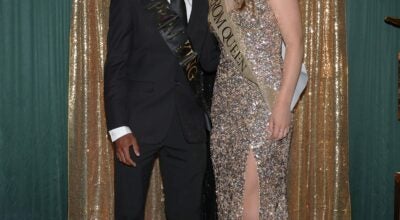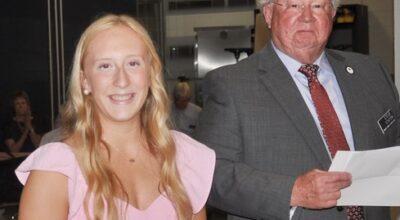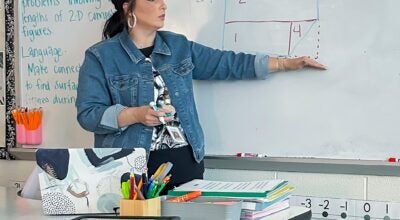Catawba students learn about oppression and protest in Chicago
Published 4:29 pm Thursday, November 6, 2014
By Courtney Briscoe
Catawba College
Chicago, Illinois had a lot in store for my classmates and I who visited the Windy city as part of the Honors course, “The Sounds of Silence: Music as a Voice for the Oppressed.” We made the trip during our Fall Break, Oct. 10-14.
For those of you who do not know, this course examines the use of music in social movements throughout history. The course is organized by specific movements, such as the Civil Rights and Women’s Rights movements, and our instructors, Drs. Julie Chamberlain and Maria Vandergriff-Avery, take turns teaching us about the musical and sociological aspects of these movements. When our professors are not providing us with an informative lecture, my classmates and I are engaging in relevant and in-depth discussions of course content.
When one thinks of Chicago, he or she might think of the skyscrapers, the famous deep-dish pizza, or the great reflective bean sculpture in Millennium Park. These are all memorable aspects of the great city we were able to experience, but there was so much more to be remembered.
We emerged from the Chicago O’Hare Airport and immediately hopped on a tour bus led by a man named Wayne Galasek who worked hard to give us a tour more tailored to our class’s needs. Galasek was a bit eccentric, but he knew what he was talking about and gave us a good introduction to the city by informing us that after the Civil War, African-American migrants had travelled from the Mississippi Delta to Chicago, bringing with them the blues. He even had our driver pull over at the original location of Chess Records, which formed from Aristocrat Records and is famous for recordings made there of blues musician Muddy Waters.
On Oct. 11, Drs. Chamberlain and Vandergriff-Avery led our class to the Chicago History Museum where we were able to view exhibits on oppression and protest throughout the history of the United States. My classmates and I took notes on each exhibit we walked through, specifically regarding those which related back to our course. At one point during our time there, the women in our class were able to pose for a picture with a banner that had been used during the fight for women’s suffrage in the early 1900s.
The night after our trip to the museum, we attended the brand-new musical, “Amazing Grace,” which explored the origins of the famous song and its relationship with the slave trade and religious values. Many of us were unsure about how good the show would be and if it would be relevant to the course at all, but by the end most of us were satisfied. A few of us (myself included) left the Bank of America Theatre in tears, moved by the musical and singing along with the cast to the song, “Amazing Grace.” We even stayed behind to meet some of the cast and were able to take pictures with Erin Mackey, who was a lead actress in the show.
The next day’s activities were set for the afternoon, giving us plenty of free time to sightsee on our own in the morning. Around noon, the class set off toward the Jane Addams Hull House located in the midst of the University of Illinois at Chicago. There we learned more about the women’s suffrage movement and the labor movement in the United States and how this home in Chicago could be connected back to a large number of social movements.
That night, the class met at a blues club called Kingston Mines. This particular blues club allowed for audience members to sign up to perform with the band on stage, which is exactly what two members of our class, Collin Denton and Emma Stoneberg, did. At one point during the show, a man sang “Get Up Offa That Thing” by James Brown, and many of us danced and laughed together along with the music, making for a memorable evening.
By the time Monday arrived, half the class was ready to make their way back to Catawba, while the rest of us felt like we could stay another week in Chicago. For the first time all weekend, the weather was not favorable. It started raining right as we arrived at the Agora Sculpture in Grant Park, which is a large array of headless and armless iron figures. Some of my classmates insisted that they felt very isolated while walking among the figures, although they were surrounded. Others felt that the sculpture reminded them of walking through a field of mindless zombies. Either way, the sculpture and its accompanying weather made an impression on our class.
The weather may have been helpful in our experience with the Agora Sculpture, but it sure did not assist us in getting home as scheduled. After a cancelled flight, the class was forced to stay the night in the Chicago O’Hare Airport, but it was not all bad. By the time we did make it home, our experience in Chicago, along with our bonding in the airport, allowed us to grow closer to our professors and with each other. We greatly expanded our understanding of course materials while building stronger relationships with our fellow Catawbans. I think we all can agree that the trip was a success.
Courtney Briscoe is an honors student at Catawba College and expects to graduate in 2016.





